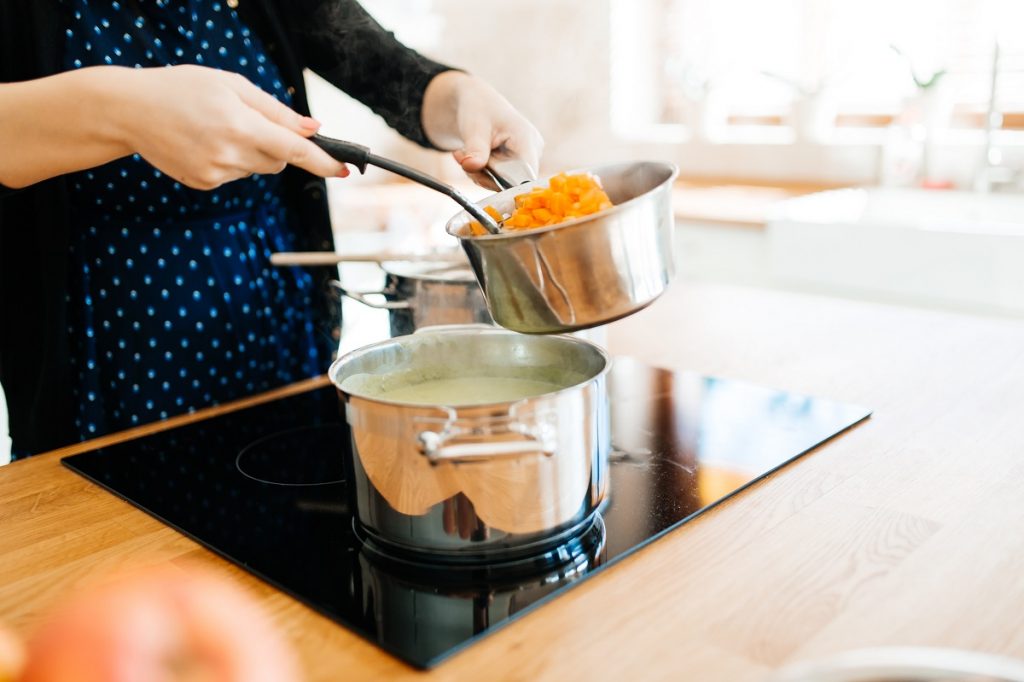Pollution is a real threat to public health but, according to experts, the majority of exposure does not happen outside.
Around the world, countless people are inhaling air pollution inside their homes and, no, these are not from the fumes that come from vehicle exhaust or smoke coming out of factories. Various human activities generate pollutants at levels that are two to five times higher than the threat outdoors.
The most common culprit, unfortunately, is one that cannot be avoided: cooking.
Cooking as a Cause of Pollution
Globally, about 3 billion people still use open fires or simple stoves to cook. The method produces large amounts of indoor air pollutants that, if inhaled, can be hazardous to human health. However, even modern stoves are risky.
Cooking, especially frying and roasting, releases fine soot and microscopic organic particles (PM2.5) that come from gas flames, oils, and fat into the air. Exposure to PM2.5 particulates can have serious health consequences because they are so small that they evade the body’s defences such as nose hair and mucus. As a result, they can infiltrate deep into the body. PM2.5 can be inhaled, enter the lungs, reach the alveoli, and mix into the bloodstream.
PM2.5 is bad news, but there are a lot of them at home. In fact, according to experts, cooking releases so much PM2.5 that it makes the air indoors more dangerous than streets of central London. Roasting meat and vegetables using a gas hob can make indoor air quality worse than in Delhi.
Worse, outdoor air pollution is often monitored and regulated, there is no one checking indoor air pollution. Homeowners are unaware if they and their loved ones are breathing in pollutants generated by their day to day activities, especially cooking.
Exposure to poor indoor air quality has been linked to various illnesses, including cardiovascular disease, asthma, chronic obstructive pulmonary disease, pneumonia, and lung cancer. The World Health Organization warns that about 3.8 million people die of the inhalation of indoor air pollution. The young and the elderly are most vulnerable to the negative impacts of indoor air pollutants.
A report by Airtopia in 2019 found that nearly half of all homes across the UK have high indoor air pollution.

Improve Kitchen Ventilation
Opening the window is the easiest thing that homeowners can do in order to freshen the air and remove pollutants indoors. However, it is not always possible to cook with the window open, especially in urban areas where the outdoor air is also bad.
Utilizing extractors is the next best step. A kitchen extractor will ensure that fumes generated from cooking will not spread around the house. Instead, pollutants will be pulled out and dumped outdoors where it will be diluted enough to not harm someone else.
In addition, make sure to schedule regular kitchen extract duct cleaning to remove any build up. Any build up in the kitchen extractor may lead to a house fire. It also makes the device less efficient because it will not be able to completely remove fumes from cooking.
Invest in an Air Purifier
Even with an open window and a kitchen extractor, pollutants may still be floating around the kitchen and the house. Homeowners should invest in an air purifier that can filter pollutants, including the tiny ones, and generate clean and healthy air. Make sure that they use high-efficiency particulate air (HEPA) filters which can remove at least 99.97 percent of dust, mold, pollen, bacteria, or any particles bigger than 0.3 microns.
Have one in all living spaces where you might not get fresh, clean air such as bedrooms, living room, dining room, and, of course, the kitchen.
Upgrade Your Stove
If your household is still cooking with gas, it is time for an upgrade. While all cooking generates PM2.5, direct combustion of fuel produces more. Previous research has suggested that cooking using gas produces twice as much PM2.5 than cooking on an electric stove. It also produces more nitrogen oxide (NO), nitrogen dioxide (NO2), carbon monoxide (CO), and formaldehyde (CH2O or HCHO) — all of which are harmful to health when inhaled.
CO is a particular cause for concern because it is an odorless and colorless gas that can be deadly with prolonged exposure. Homes that still use gas stoves have about 0.5 to 5 ppm of CO.
The home should be a space where people can feel safe, but that will not happen if there are unseen threats lurking around that can cause illnesses. While it is normal for cooking to produce pollutants, you or your loved ones do not have to be exposed to it. There are ways to manage and remove pollutants at home that come from cooking.

